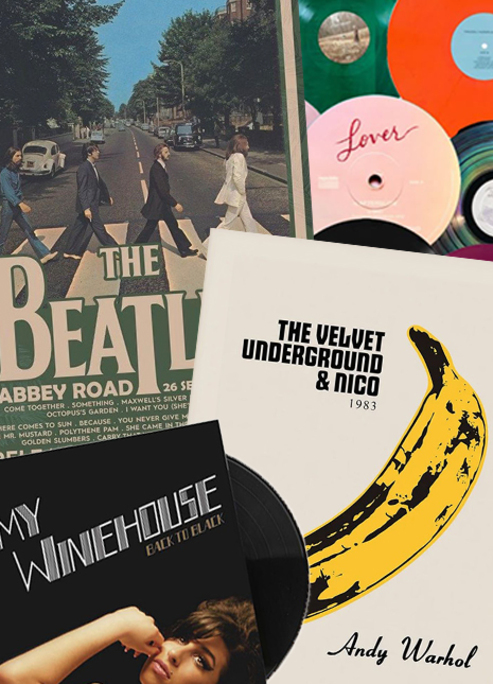Why We Should Be Teaching Both Girls And Boys About The Female Orgasm From An Earlier Age
Teach girls about orgasms!
An MP for labour in London, Jess Phillips, has recently asked that we make the female orgasm a necessary part of sexual education in schools.
If you look at the majority of heterosexual relationships today, the rate and frequency of the female orgasm is far lower than that of the male orgasm; where 95% of heterosexual men “usually or always orgasm” with a partner compared to 65 % of straight women. This got us thinking about what our education, pop culture, visuals and norms teach us about sex.
Looking back at my personal experience, the sex education I was provided with in my particular place of education was next to nothing. I have the vague memory of passing around an IUD in biology class — this weird looking little anchor of a thing - that everyone passed on to each other like it was a game of hot potato — not wanting to look as though vaguely interested or indeed hadn’t ever seen one of these before.
Next, came the obligatory couple of mentions of certain STI’s and contraceptive methods, but of course our teacher reminded us of the golden rule: that if we “wanted to be really sure” that abstinence was key. Remember the eponymous Mean Girls line from Coach Carr? “Don’t have sex. If you have sex, you will get pregnant, and die”. Not words to live by…
Essentially my sex education was pretty sub-par. Such a huge and impactful part of most of our lives as humans, sex should be something we make sure is understood in its’ entirety and all of its’ complexities from an early age.
And it wasn’t till recently that I started to think differently about the end goal of sex itself. Public dialogue around the subject has always presented, in a sort of twisted — lay back and think of England way — the main aim in heterosexual relationships is the male climax.
If you learn about sex in science class, they’re going to teach you about how the sperm travels through cervix and fallopian tube to the egg, eventually fertilizing it and creating an embryo. The female orgasm as a subject is often avoided; with scientists not yet knowing its scientific function. Plus, when studying the male and female anatomy, the female ‘exterior’ parts and their functions (vulva, labia and clitoris) are also given less importance or altogether ‘forgotten’.
An alternative way that we learn about sex is through porn. But in porn, male desire is placed as most important. The male gaze that porn perpetuates denies and/or shames any kind of owned female desire. It also skews ideas about body types, shapes and roles within sex. Much less, what it takes for a female orgasm to occur… Plus, since the advent of free porn in 2007 erectile dysfunction has increased 1000%; inextricably linking the two and showing the huge impact porn has on our real lives.
Yet porn has become an alternative way for us to learn about sex. A survey found that 60% of British students interviewed consult pornography, in part, as an instruction manual. And this comes as no surprise when our sex education ignores key facts and is only a requirement in council-run schools in the U.K.
Jess Philips, a labour MP for London, is campaigning to make sex education compulsory in all secondary schools in the U.K by 2020 with female pleasure at its’ heart. She believes that teaching children about healthy relationships and the anatomy as well as both female and male desire will not only break down power imbalances but also reduce violence against women.
Personally, I learnt about sex through sex itself, which luckily for me was in a series of consenting relationships, but which unfortunately is often not the case for many young girls. In fact, statistics show sexual violence as even more prevalent for younger women as one in three teenage girls has experienced some form of sexual violence from a partner where coercive control or pressure is used much more frequently than physical force (University of Bristol for NSPCC, 2009).
In response to these figures, this year saw proposals for reform to sex education in the U.K for the first time in 17 years. Whilst the U.K Department of Education promise to make relationships and sex education compulsory in every school in England as well as address issues of coercion and consent, they fail to address key areas of sex education that create a lack of equality that is often cause for the violence experienced by women across the U.K.
Their proposals fail to include many LGBTQ+ issues, as well as to make sex education compulsory before the age of 15 and they make the teaching of female genital mutilation and forced marriage optional. The education also focuses on “self-control” where yet again the role of the perpetrator is minimized and that of the victim maximised.
If we teach women that sex is about men, that they are in charge of ‘managing’ of male sexuality, then we are creating a power imbalance and an excuse for inexcusable behaviour.
It is clear that something in the ways in which we learn about sex has to change. Not only is this something that affects our behaviours and expectations but also our relationships. Sex education needs to be broadened where a re-addressing of what sex constitutes could redress power imbalances. Connecting pleasure equality with sexual consent; if we teach girls and boys equally about both female and male desire then perhaps this can prevent the abuses that come from such power imbalances and gender stereotypes.
Let’s open up the conversation from a younger age and educate girls and boys properly- where both female and male desire is understood as equal.
Next up, Why Do Over Half Of Women Keep Their Toys A Secret?












